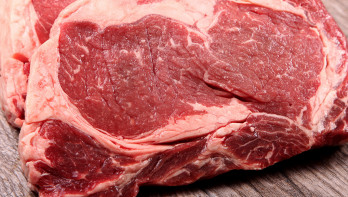Analysis Meat
Japanese beef market in focus: import decreases
The Japanese beef imports have significantly decreased. Higher domestic production is one reason for the decline, but especially lower consumption is pushing the imports down. Initially, exports decreased from every import market, but one country has now managed to benefit from the situation.
Japan is a major market for the international meat sector, including beef. However, in recent years, beef imports have been steadily declining. In 2019, Japan imported 853,000 tons of beef. By 2023, the import had dropped to 702,000 tons, a decrease of 17.7%. The import decreased significantly, especially between 2022 and 2023. In 2022, 777,000 tons of beef were still imported.
Part of the lower import can be explained by an increase in domestic production, as the number of slaughters in the Asian country has not decreased. In fact, in 2022 and 2023, the number of Japanese cattle slaughters increased significantly, according to data from the United States Department of Agriculture (USDA). In 2021, over 1,056,000 cattle were slaughtered in Japan. By 2023, the slaughter figure rose to 1,150,000 cattle, an increase of 4.7%.
Interestingly, meat production did not increase as much. In total, the volume produced by Japanese slaughterhouses in 2023 only increased by 1.1%. This indicates that cattle are being slaughtered at a lighter weight. This is mainly due to a higher proportion of dairy cattle slaughters. Due to inflation in recent years, the Japanese demand for milk has decreased. Japanese people have relatively little trouble cutting back on dairy products, as dairy traditionally plays a relatively small role in the Japanese diet.
This prompted Japanese dairy farmers to bring less productive dairy cattle to slaughter early. In addition, 5.3% of Japanese dairy farmers decided to stop in 2022. Figures for 2023 have not yet been released by the Japanese government, but the USDA expects stabilization. Therefore, according to the United States Department of Agriculture, production is likely not to increase this year, while the number of beef cattle is expected to continue rising. This indicates a decrease in meat supply from Japanese dairy farming.
The import is further suppressed by a decrease in Japanese meat consumption. Just like the milk market, the beef market was significantly affected by inflation. In 2022, Japanese beef consumption decreased by 3%. Reasonably strong consumption by tourists in the hospitality industry, however, masks an even greater decline. Consumption in the hospitality industry increased by 60% that year for the first time since the pandemic, although it still had a long way to go.
Losers and One Winner
Not all export markets suffered equally from the lower imports. The imports from the European Union decreased the most in relative terms, by 64%. It should be noted that the export was always limited. In total, beef exports decreased from 15,000 to 5,500 tons. Additionally, exports from the United States decreased significantly, by 9% or 27,500 tons in absolute terms. The export to Australia decreased the least. In total, the export decreased by only 1%, from 292,000 to 290,000 tons.
Now that inflation has subsided somewhat, Japanese beef imports are picking up again. Just like with the initial import declines, not all export markets are benefiting equally. For example, beef exports from the United States decreased by 3% in the first five months of the year, according to data from the U.S. Meat Export Federation (USMEF). In the first five months of 2023, the country exported 108,500 tons of beef. European exports increased by a whopping 50% in this period, although the volumes are so small that the effects are almost negligible. Most notably, Australia, which lost the least volumes, is benefiting the most from Japanese exports. In the first half of 2023, Australia exported 134,000 tons of beef, an increase of 31,000 tons or 31% compared to the previous year.




